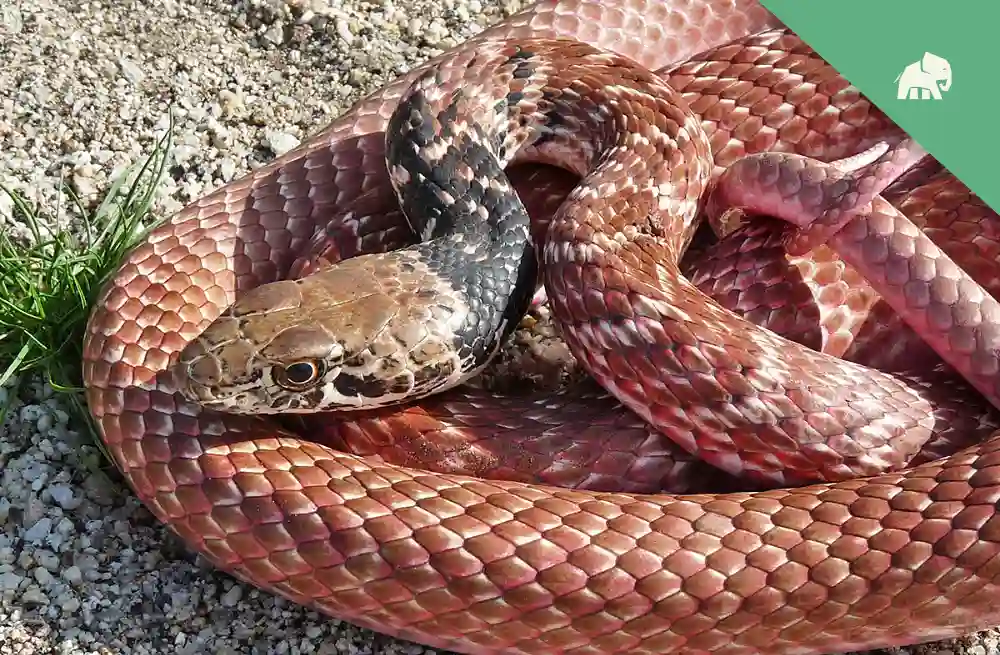Bison and buffalo – two majestic creatures that roam the earth with their massive frames and thick coats. While the two terms are often used interchangeably, there are actually significant differences between these animals that are often overlooked. Have you ever wondered what sets these creatures apart?
If so, you’re in the right place! Today, we’ll explore the key differences between bison and buffalo, from their physical characteristics to their cultural significance. So, whether you’re a nature enthusiast or just curious about the world around you, read on to learn more about these fascinating creatures.
| Characteristic | Bison | Buffalo |
|---|---|---|
| Habitat | North America | Africa and Asia |
| Coat color | Dark brown | Lighter brown |
| Horns | Short, curved, inward-pointing | Long, sweeping, outward-curving |
| Size (shoulder height) | Up to 6 feet for males, up to 5 feet for females | Around 5 feet for males and females |
| Weight | Up to 2,200 pounds for males, up to 1,000 pounds for females | Up to 2,000 pounds for males and females |
| Status | No longer endangered | Some species are endangered |
Note: There are different species of buffalo, so this table is a general comparison between bison and buffalo as they are commonly referred to in North America.
Physical Characteristics
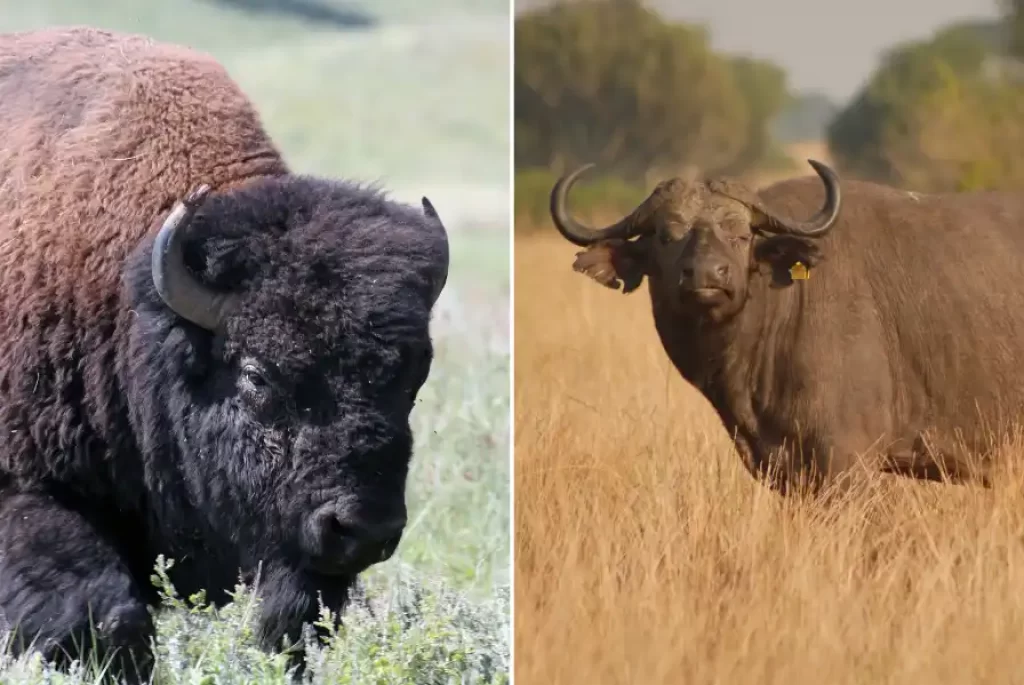
Bison and buffalo may look similar at first glance, but there are a number of physical characteristics that set them apart. Here are some of the key differences:
Size:
Size is one of the most noticeable physical differences between bison and buffalo.
Bison are typically larger than buffalo, with males reaching a shoulder height of up to 6 feet and a weight of up to 2,200 pounds. Females are slightly smaller, with a shoulder height of up to 5 feet and a weight of up to 1,000 pounds. Bison are also heavier and more muscular than buffalo, which is reflected in their overall appearance.
Buffalo, on the other hand, are smaller than bison. Male buffalo have a shoulder height of around 5 feet and a weight of up to 2,000 pounds, while females are similarly sized. This makes them significantly smaller than their bison cousins.
Interestingly, the size of bison and buffalo can also vary depending on the specific species or subspecies. For example, the African buffalo is generally larger than the American buffalo, while the European bison is larger than the American bison.
In general, however, the difference in size between bison and buffalo is noticeable and is one of the key characteristics that can be used to distinguish between the two species.
Coat color:
The coat color of bison and buffalo is another key physical characteristic that distinguishes these animals from one another.
Bison have a shaggy, dark brown coat that can vary from a light brown to almost black in color. This coat is made up of long, coarse hairs that help protect the animal from the elements. The coat of a bison is particularly thick around its neck and shoulders, where it forms a hump that is distinctive of the species.
Buffalo, on the other hand, have a smoother coat that is generally a lighter brown in color. However, some species of buffalo have a darker coat color that is similar to that of bison. Additionally, some types of buffalo have a white “beard” around their necks, which is caused by longer, thicker hair in that area.
Overall, the differences in coat color between bison and buffalo are relatively subtle, and some people may have difficulty telling the two apart based on this characteristic alone. However, when taken together with other physical characteristics like size and horn shape, the differences become more apparent.
Horns:
Horns are a distinctive feature of both bison and buffalo, but they differ in shape and size.
Bison have short, thick horns that curve inward toward each other. They are made of a bony core that is covered in a keratin sheath, which is the same material as human fingernails. The horns of bison are typically used for defense against predators and rivals during mating season.
Buffalo, on the other hand, have longer, sweeping horns that curve outward from their heads. Their horns are also made of a bony core covered in keratin, but they are thinner and more pointed than those of bison. Buffalo use their horns to sweep aside vegetation in search of food and to defend themselves from predators.
Interestingly, the shape and size of the horns can also differ between different species of bison and buffalo. For example, the water buffalo has the longest horns of any buffalo species, reaching up to 6 feet in length. The American bison, on the other hand, has shorter, thicker horns than some of its cousins in Europe and Asia.
Despite these differences, both bison and buffalo rely on their horns for survival in their respective habitats. Their horns are an important adaptation that has helped these animals thrive in their environments for thousands of years.
Overall, while bison and buffalo share some physical similarities, there are several key differences in their size, coat color, and horns that set them apart from each other.
Habitat
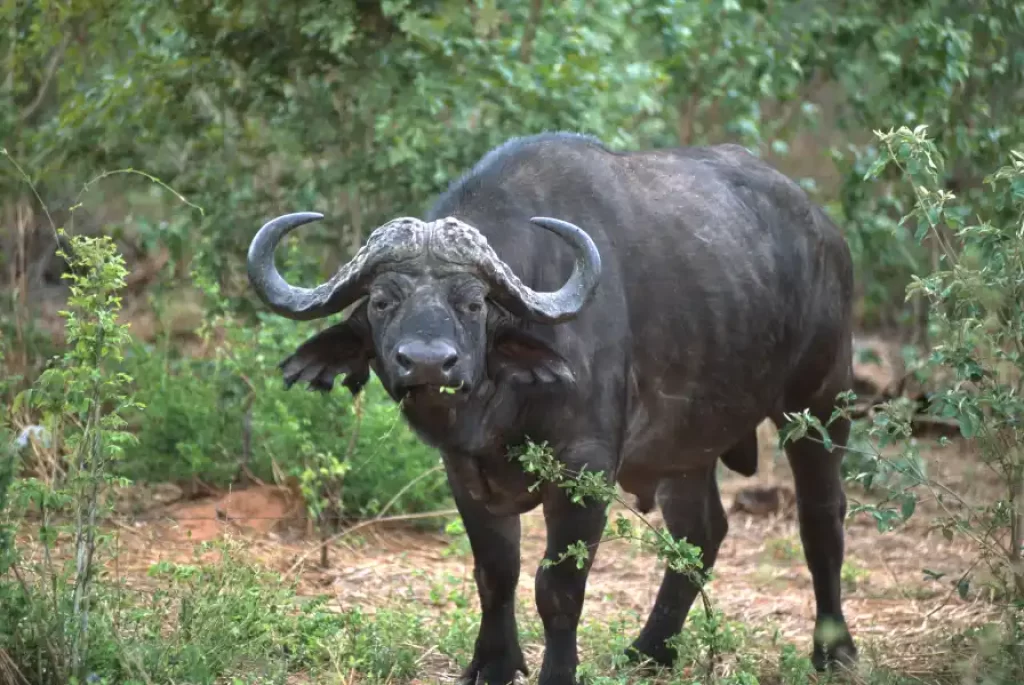
Bison and buffalo are found in different parts of the world and have adapted to various ecosystems.
Bison are native to North America and were once found in large numbers across the Great Plains region of the United States and Canada.
Historically, they roamed the grasslands and prairies from Mexico to Canada, with an estimated population of 30 to 60 million animals. However, overhunting and habitat destruction brought them to the brink of extinction in the late 1800s, with only a few hundred individuals remaining by the end of the century.
Today, thanks to conservation efforts, the population of bison has rebounded to around 500,000 individuals, although they are still considered a threatened species.
Bison are now primarily found in national parks, wildlife refuges, and private ranches across North America. They inhabit grasslands, prairies, and meadows, and are well adapted to the harsh winters and hot summers of these regions.
Buffalo, on the other hand, are found in several parts of the world, including Africa and Asia. The African buffalo is the most well-known species, and is found in a variety of habitats across the continent, including grasslands, forests, and wetlands. They are known for their resilience and can survive in a range of environmental conditions.
In Asia, the water buffalo is the most common species and is found in countries like India, China, and Vietnam. Water buffalo inhabit wetlands and are often used for farming and transportation.
Cultural Significance
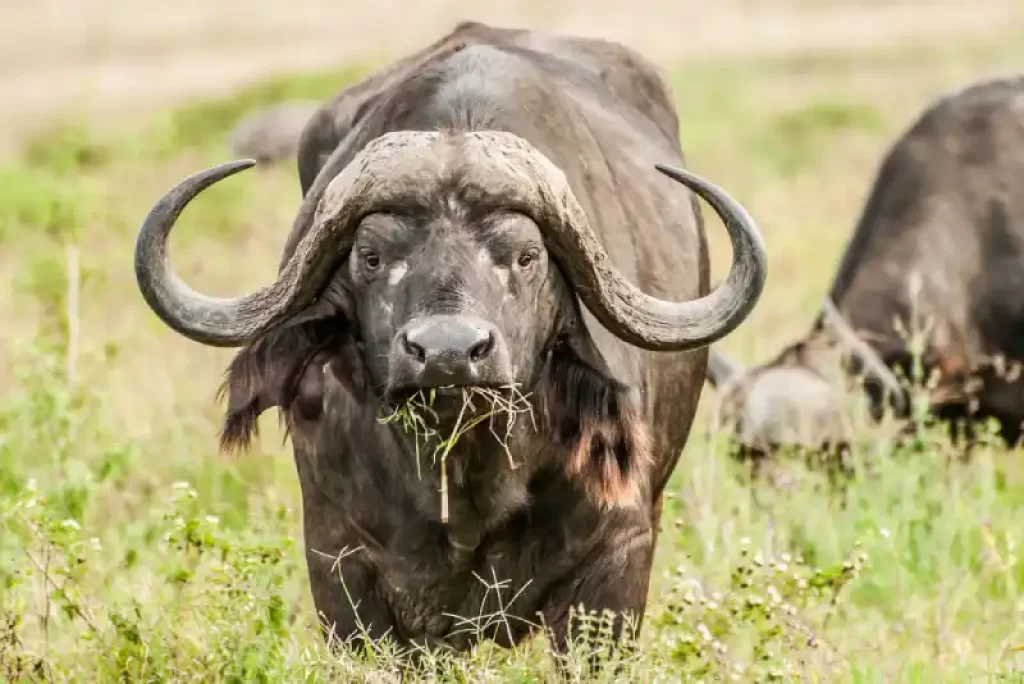
Bison and buffalo have played a significant role in the cultures of many indigenous peoples throughout history. They have been hunted for food, hides, and other materials, and have been a symbol of strength and resilience.
For Native American cultures, bison have been an important part of their way of life for thousands of years. The Plains Indians, in particular, relied heavily on bison for food, clothing, and shelter.
They used every part of the animal, from the meat and bones to the hide and sinew, and even the dung was used for fuel. Bison were also a spiritual symbol for many tribes, representing power, abundance, and interconnectedness with the natural world.
The arrival of European settlers in North America in the 1800s brought about a significant decline in bison populations, as they were hunted for sport and to make way for agriculture and development. This had a devastating impact on Native American communities, who depended on bison for their survival.
Today, bison continue to hold cultural significance for many Native American tribes, and efforts are being made to restore their populations and ensure their survival.
Some tribes have established bison herds on their lands and are working to reintroduce them to their natural habitats. Bison are also an important part of the economy in some Native American communities, as they are raised for meat and other products.
Buffalo, too, have played an important role in the cultures of many societies throughout history. In India, for example, the water buffalo has been used for farming and transportation for thousands of years. In some African cultures, the African buffalo is seen as a symbol of strength and bravery.
Today, buffalo continue to be an important part of the economies and cultures of many countries around the world. They are raised for their meat, milk, and other products, and are also used for tourism and conservation purposes.
You might also like: The American Bison: An Icon of North American Wildlife
Conclusion
While bison and buffalo are often used interchangeably, they actually refer to two different animals with distinct physical characteristics, habitats, and cultural significance.
Bison are larger, with a shaggy dark brown coat and short, curved horns, while buffalo have a lighter brown coat and longer, sweeping horns that curve outward.
Understanding the differences between these two animals is important not only for accuracy in language and communication, but also for conservation efforts and cultural appreciation.
Bison vs. Buffalo FAQ’s
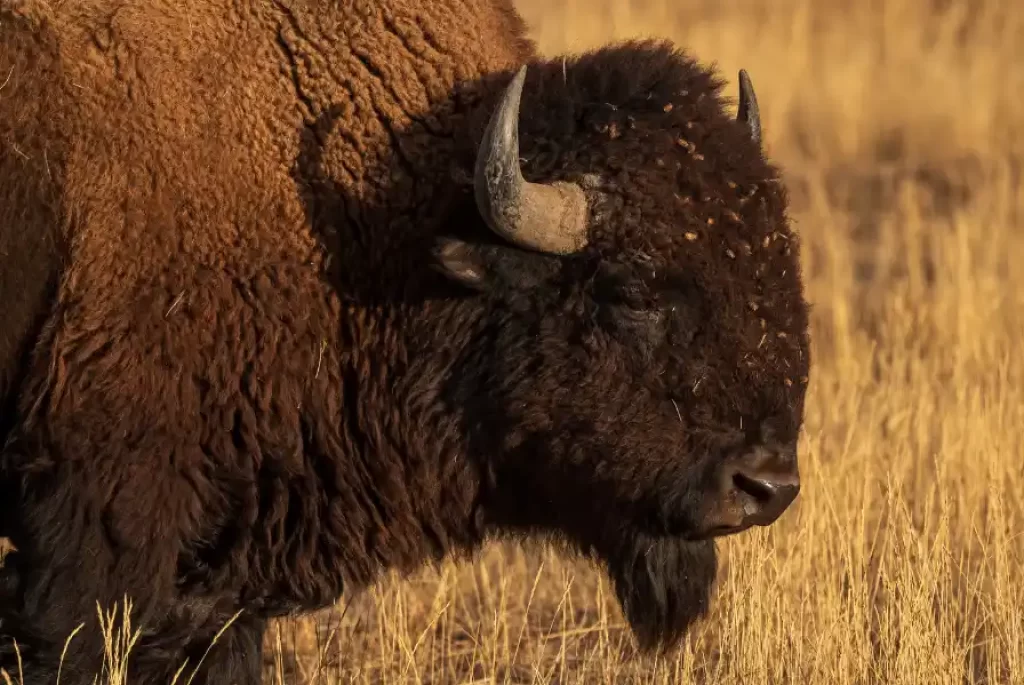
Q: What is a buffalo?
A: Buffalo is a common name used to refer to several species of large, grazing herbivores found in different parts of the world, including Africa, Asia, and North America. Examples include the African buffalo, the Asian water buffalo, and the American bison.
Q: How many species of buffalo are there?
A: There are several species of buffalo, including the African buffalo, the Asian water buffalo, the Cape buffalo, the forest buffalo, and the American bison.
Q: What is the largest species of buffalo?
A: The largest species of buffalo is the African buffalo, also known as the Cape buffalo. It can weigh up to 1,500 pounds and stand up to 5 feet tall at the shoulder.
Q: What do buffalo eat?
A: Buffalo are herbivores and mainly graze on grasses and other vegetation. The specific diet of a buffalo depends on the species and the habitat in which it lives.
Q: What is the cultural significance of buffalo in different parts of the world?
A: Buffalo have played a significant role in the cultures of many indigenous peoples throughout history. In Africa, for example, buffalo have been revered for their strength and are considered a symbol of prosperity and abundance.
In Asia, buffalo have been domesticated and used for transportation, farming, and religious rituals.
In North America, bison have been an important part of the culture and spirituality of Native American tribes, and continue to be an important symbol of cultural identity and conservation efforts.
Q: What is a bison?
A: Bison, also known as American bison, are large, grazing herbivores native to North America. They are known for their shaggy, dark brown coat and distinctive hump at the shoulders.
Q: How many species of bison are there?
A: There is only one species of bison, the American bison (Bison bison). However, there are two recognized subspecies: the plains bison and the wood bison.
Q: What do bison eat?
A: Bison are herbivores and mainly graze on grasses and other vegetation. They are well adapted to harsh weather conditions and can survive on sparse, tough vegetation.
Q: What is the difference between bison and buffalo?
A: While the terms “bison” and “buffalo” are often used interchangeably, they actually refer to two different animals. Bison are native to North America, while buffalo are found in Africa and Asia. Additionally, bison have a shaggy, dark brown coat and short, curved horns, while buffalo have a smoother, lighter brown coat and longer, sweeping horns.
Q: Are bison endangered?
A: Bison were once driven to the brink of extinction in North America due to overhunting and habitat loss. However, conservation efforts have helped increase their numbers and they are no longer considered endangered.




